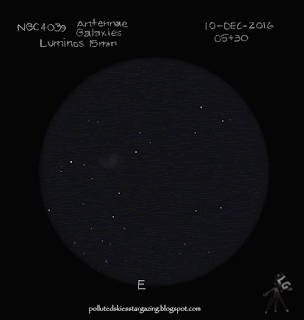Antennae Galaxies
Stars have a social
life, just like us. They grow in a nursery environment and when they get older
became more independent but still in contact with others in the middle of their
open cluster neighborhoods. Some of them find a pair to mate with for life and at
the end of their lives, we can always find many of them living together in
geriatric homes called globular clusters. Social life includes both attraction and repulsion and it also happens at galactic scale. Our galaxy, the milky way
and its two nearest friends Triangulum Galaxy and Andromeda Galaxy are getting
closer so in about 4 billion years they will encounter face to face (or butt to
face?). This collision was initially thought to be only between the Milky Way and
Andromeda, but it seems that Triangulum galaxy will also join the collision
eventually.
Will there be massive
destruction, chaos and enormous outbreaks of stellar violence? Two galaxies crashing sounds a little too
cataclysmic, but due to the enormous “empty” space between the stars it would
be more like an harmonically mating dance. But remember about the social
interactions: there will be attraction and repulsion of everything involved in
the scene, like if two big families move to a single house and then they
reorganize every single room to fit themselves in the house and yet there is
one or two members than can not endure the chaos and leave home.
I am not sure if the
human race will be still “alive” in four billion of years to experience that,
but one thing is sure; if we get to survive, our house will not be on Earth. By that time our Sun will have started (or
finished) the process of becoming a red giant and then shrinking into a white
dwarf and we won´t endure that process living on the surface of our planet.
It sounds like a good
show that we will missed, what a pity. There is still a hope to see a replica
of that show on the next clear night though: Antennae Galaxies performed by NGC
4038 and NGC4039, two galaxies located at 45 Mly from us. This is a wide angle picture, courtesy of my Argentinian
friend Fernando Buezas (FBUEZAS) where the harmonic mating of the two galactic
can be seen with a little bit of detail:
 |
| Click in the image for full size |
Two galactic bodies
merging into each other can be
appreciated in the picture as well as two curved jets, products of the stars
and dust ejected from the humongous battle of physical forces. In my 6 inche aperture under suburban skies I
missed totally the anthennas, but I was still able to see the two bodies
merging. With averted vision, they looked like a “coma” or a horizontal number
nine.
With this pair of
galaxies the same phenomenon is happening that I had with other faint galaxies
like Sombrero. The whole shape is better seen in low magnification as the light
that comes from the surface is spreaded over a smaller surface, therefore the
edges contrast more with the background
and it’s easier to see the shape. Once I had that image in my head, I procceded
to add more magnification and look for some details in its surface. This was
the final result.
Antennae galaxies are located in Corvus. To find them, one can start from the star γ Crv, then hop almost two degrees to an "L" formed by HIP59124, HIP57217 and HIP59195A; then another hop to the 5th magnitude star HIP58587 and northeast of it, there is a patch of light that will reveal the galactic collision.

Happy hunting!!!
LG
Edited by Jennifer Steinberg (editor in chief)
SOURCES
Stellarium


No comments:
Post a Comment